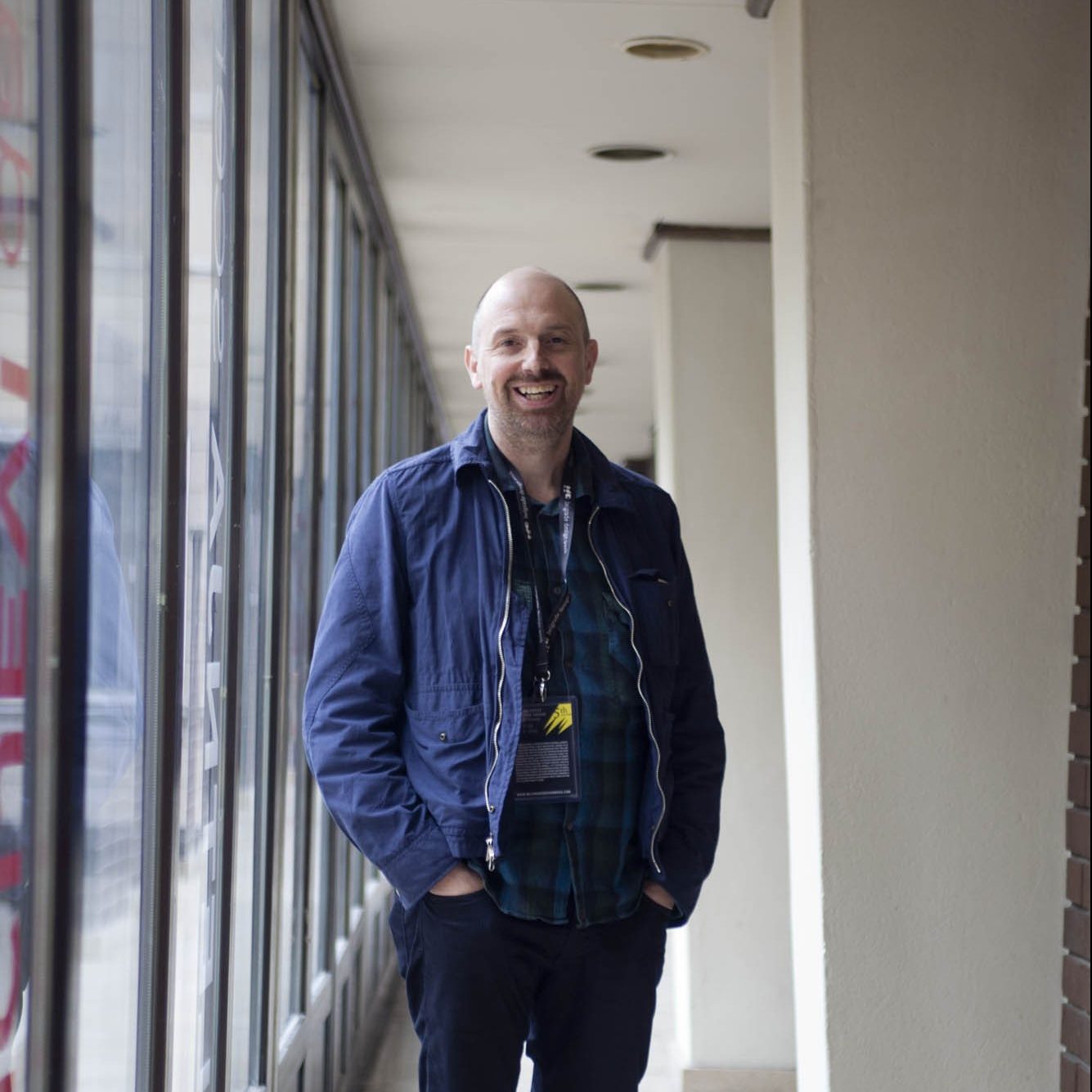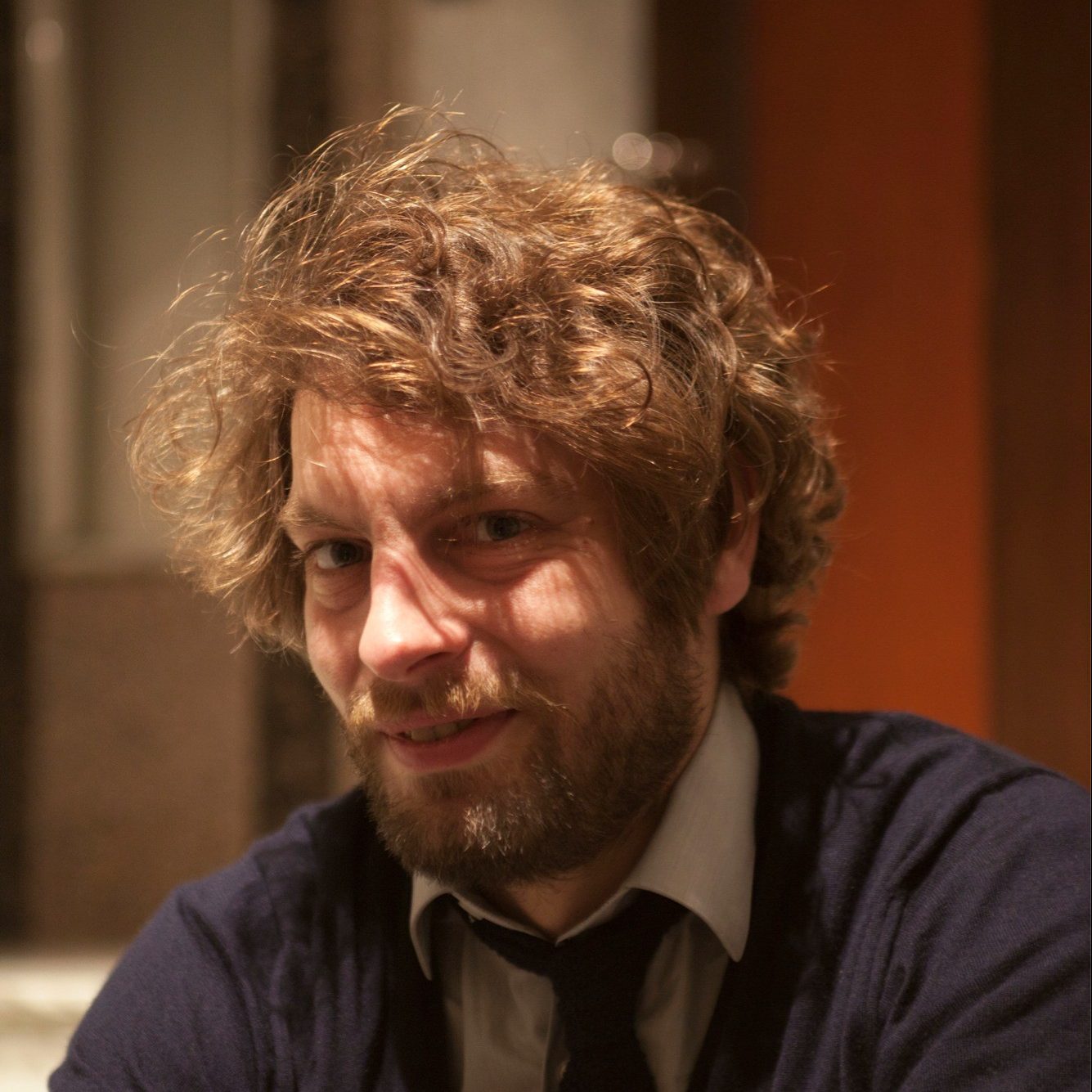
INTERVIEW WITH ANDREW STEVENS – Designed.rs
You’re renowned for your exhibitions?
How did all of this get started?
It started with a colleague… not a colleague, a friend at college who was studying curation and art history claire catterall. After we all left, we were doing bits of work and she went to the Design Museum as an assistant curator. We had a very strange episode where we won ten thousand pounds in a luxury game… anyway, it’s a long story featuring a terrible British tv celebrity.
Anyway, after we won this money, and after buying a computer we designed this very fancy poster for ourselves that had foil, silk screen and glow in the dark and we sent it out trying to get work, and we got nothing. Claire had an exhibition coming up about plastics at the Design Museum and she thought this kind of fun way of doing graphics and materials could be good, so we got called in to do the graphics on this plastics exhibition at the Design Museum.
From that we also then got asked, and I felt very honored because they thought we’re great – I think it’s because we were so bloody cheap [laughter] we got asked to design an exhibition celebrating 100 years of the royal college of Art which we graduated from two or three years before. We worked with Russell Warren Fisher who was a designer couple of years above us and he was a tutor at the college, and together we designed a very big show. It was the first time I think I felt stress, ever. He designed this very big show for no budget and that was seen by Dinah Casson who was a tutor on interior design at the royal college of Art. There was a fantastic company in a non-college life, casson Mann, they were the best exhibition designers in the UK, and they work internationally. We struck up a relationship with them, and so many of our designs for exhibitions have been done in collaboration with Casson Mann, smaller ones we do on our own, but then we’ve also worked with people like Ben Kelly who did the great Haçienda club, Ab rogers and Richard rogers, a fantastic interior designer…
So it’s all collaborative stuff ?
Very collaborative. When we do exhibitions on our own, they’re usually for small places like the Design Museum where there’s not really a budget for a big team.
You have a very good relationship with designers?
Yeah, but we’re probably doing less now but we have a great history of doing nice work. The last show we did was with Dejan Sudjic that was first opened in Istanbul, it was Design cities, and we did the whole thing for that. It continues through exhibition work not because it’s great money but it’s very time absorbing on the studio… and, it’s this chance to work with people who are specialists in their field. And you know, you look at that presentation of Werner Aisslinger this morning, and that lovely hotel that he designed. That’s kind of a dream job for us in a way, you’ve got someone with a 3d sensibility like Werner doing that, and then you think how graphics can be applied in that setting and you work together and so it’s for, you know, that type of setup that we’re always looking for in exhibition design. It’s a nice niche to be in. There’s companies like Miah Scoffin in London who are graphic designers who do lovely exhibition work. It’s not a big world, and you often need a bit of experience to kind of plan it.
You’re quite influential bearing in mind that Creative Review readers have voted your company as one of the most influential in design alongside other big names such as Marc Farrow and Jonathan Ive. This is really the top of worldwide design…
That’s incredibly flattering, and I know my mum looks after a copy of that magazine very well [laughter]. I think we just ended up with a good set of people, not only myself but Paul Hewitt as the director…
But what does this voice from the audience tell us about the state of British design and its taste?
I think it’s interesting in Britain, because I think taste is a funny issue in the uk. It was interesting hearing the guy’s comment about saying “you go to Britain and everyone sits on a shit chair.” I don’t disagree, but I think even amongst designers in Britain there is a fear about being to designery. You go to any designer’s house and they’ll always have some piece that they love, but it’s very rare that it will be kitted out in top European design. I think taste in Britain is a bit more eclectic.
I think it’s a bit less prescribed as “this is good taste, this bad taste” I think there’s more of a cross over in that.
Your design is very unobtrusive, you’re not using too much graphics to emphasize things, you’re letting the image flow and the typography is very informal and kind of really there to serve the purpose of communication…
I think it came from that 60’s thread we talked about of Alan Fletcher, Bob Gill, Derrick Birdsall. There’s a simplicity to it, and if the material… I think we’re very fortunate to work with lovely material, so there’s no need to fill space with graphic design. We’re trying to find a lovely form or methodology to present that work, that’s basically that idea of systems and things. I think that we decided at the beginning that our work would be about trying to serve the purpose of the brief and the project. You can’t, I think, deny a style. I think if someone sees a piece of work saying “this looks a bit like Graphic Thought Facility” you cannot be that neutral, but it’s definitely not being about developing…
It’s more about what kind of style of photography that you’re choosing, and from there that the art direction is very strong?
It’s funny because an art director is a phrase I always felt… I would never call myself an art director. I think of an art director as an incredibly confident-driven designer who’ll be on set saying “do this, do that” [laughter] … but I think we are quietly very strong art directors. In a sense that we’re trying to define an envelope for a project, saying – this is the premises it will operate within and that can do is often give freedom for great photographers and great illustrators to do work that feeds… we just kind of set up a context sometimes and then I think, particularly, the work we’ve done with Nigel Shaffran for the Globe Theatre. The Globe was an interesting project that we have gotten handed down from Pentagram.
Was that photography shot on purpose? Was it set up?
Nigel’s photography?
Yes. Just to go back a little bit to the beginning… so we went to see “The Globe”, and at first we thought it’s a bit of a touristy place we’ve never been. Angus Hyland, the designer at Pentagram told us to go and see it because it’s very interesting. We met then Mark rylands, the creative director – an incredible personality who really won us over. Although it’s about traditional practice in terms of the space and the costume and the design of the theatre, it’s here and now. It’s actors living now, trying to get emotions from audiences living now.
In all this history, we also have to find a way that is also now. We wandered around with him backstage, and we noticed that obviously everyone is in these beautiful hand-made costumes but at the same time they’re getting their drinks from a coffee-machine or warming a pot-noodle in a toaster and there was this great clash of “now and then.” Since we admired Nigel’s work, his very cool way of finding interest in space… so we just said to Nigel that we just want this mix of old and new. The way he works was to observe, and he wasn’t in a kind of reportage way. He was just sitting there quietly and things would happen, but then he would say “excuse me that looks really good, can I just take a picture?” – so he would pose them.
So they were doing things that they would be doing anyway like – being dressed, having their break, or looking at their lines or having their make-up done. Only retrospectively, I think, we realize how paintily that was. You think back to a Caravaggio, so he would obviously have to think of a scene, pose it, and paint it. That was just a very nice way to work. The bodywork in the corridors has Nigel’s work, and then it’s got work of two photographers who we work with quite a lot – Angela Moore and Annabelle Elston. Similarly, it’s a nice dialogue – obviously it’s not about us saying photograph this in this way or with this much bleed…first poster, that was enough. That was it. The only other poster that we’ve done for ourselves since that one was when we had a show in Japan.
How relevant is this year’s Belgrade Design Week’s concept (Smart Squared) for the current global economic situation as far as the way things are going right now?
I think the concept is ideal to be smart. I think it’s a bit of an old cliché maybe because people told us that we’d finish college and have no jobs. Things happen when there’s not a lot of money around. People rather than just going and getting snapped up in a pyramid in a bigger company, people go out and do things for themselves and beg favors from each other. I just think that kind of smartens us, brings out intuition which helps finds gaps which is a good way to work. I thought it was well spoken by Mirko who said that you can’t expect to walk up to Mr. capellini – and go “I’m gonna do this.” You have to make things happen. When there’s things like Milan, there’s always these kinds of little satellite shows and people see things, and they pick it up…
So, you have to be smart?
You have to persevere and be lucky… and everything, don’t you, really? [laughter] You can’t rule out luck. But I quite like that… that you have to be smart. It’s not just a matter of saying which studio should I pick and work for?
Someone once said it’s better to be wise than smart. I’m slowly getting there… [laughter] I wouldn’t put myself in that league. [laughter]
Lastly, what are you plans for this summer?
I am going to a little festival with my wife and daughters in a vw camper van. It’s a nice little literary/music festival in cornwall. Hopefully the sun will shine… and then we’ll do a bit of sitting in a hammock, listening to very wise people speaking and play music, and then I’m going to Devon. So English seaside… buckets and spades, fish and chips. Not too much design… [laughter]
Trackback from your site.
